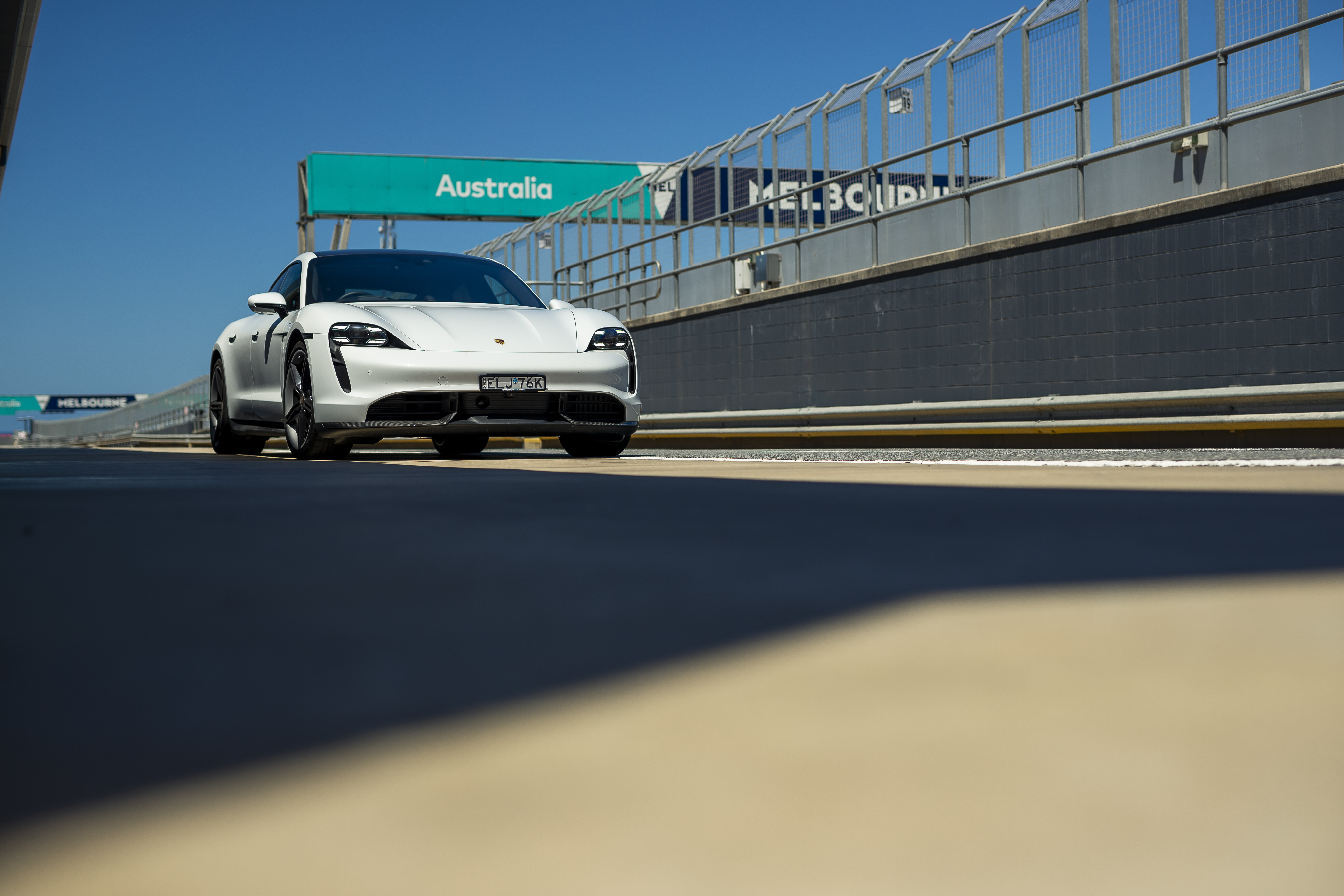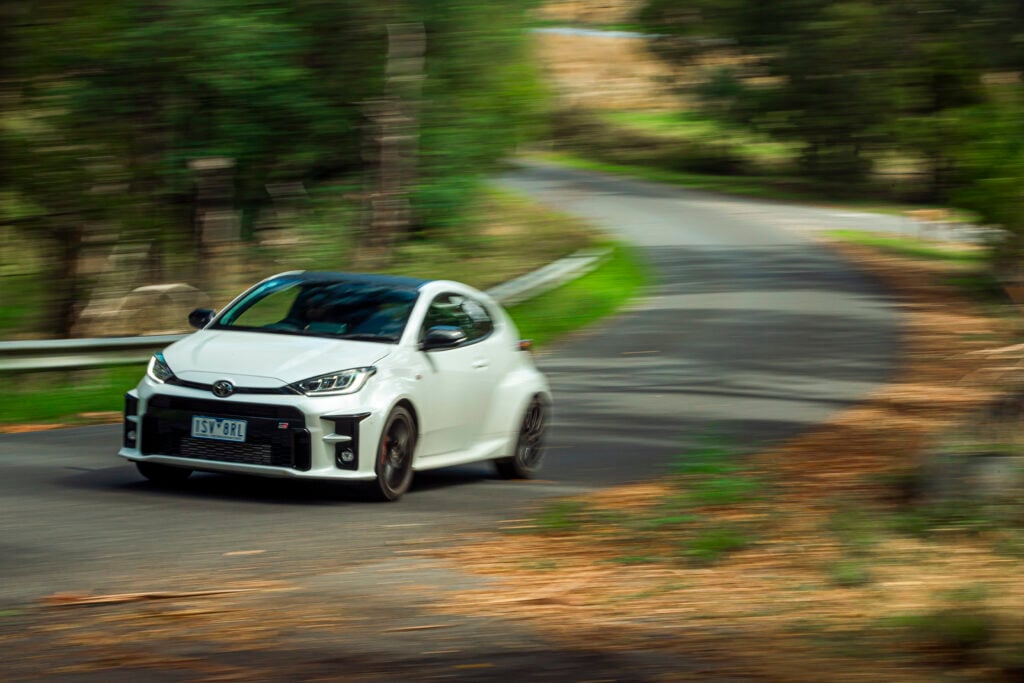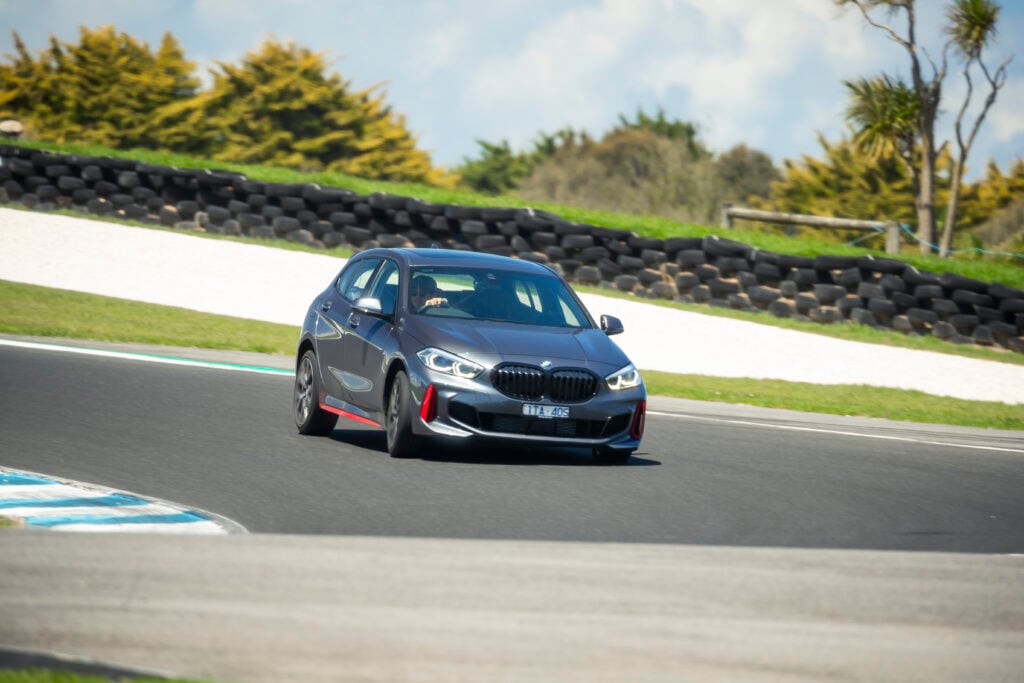As the first electric vehicle to tackle Performance Car of the Year the Porsche Taycan Turbo S was always going to be a litmus test – and it passes.
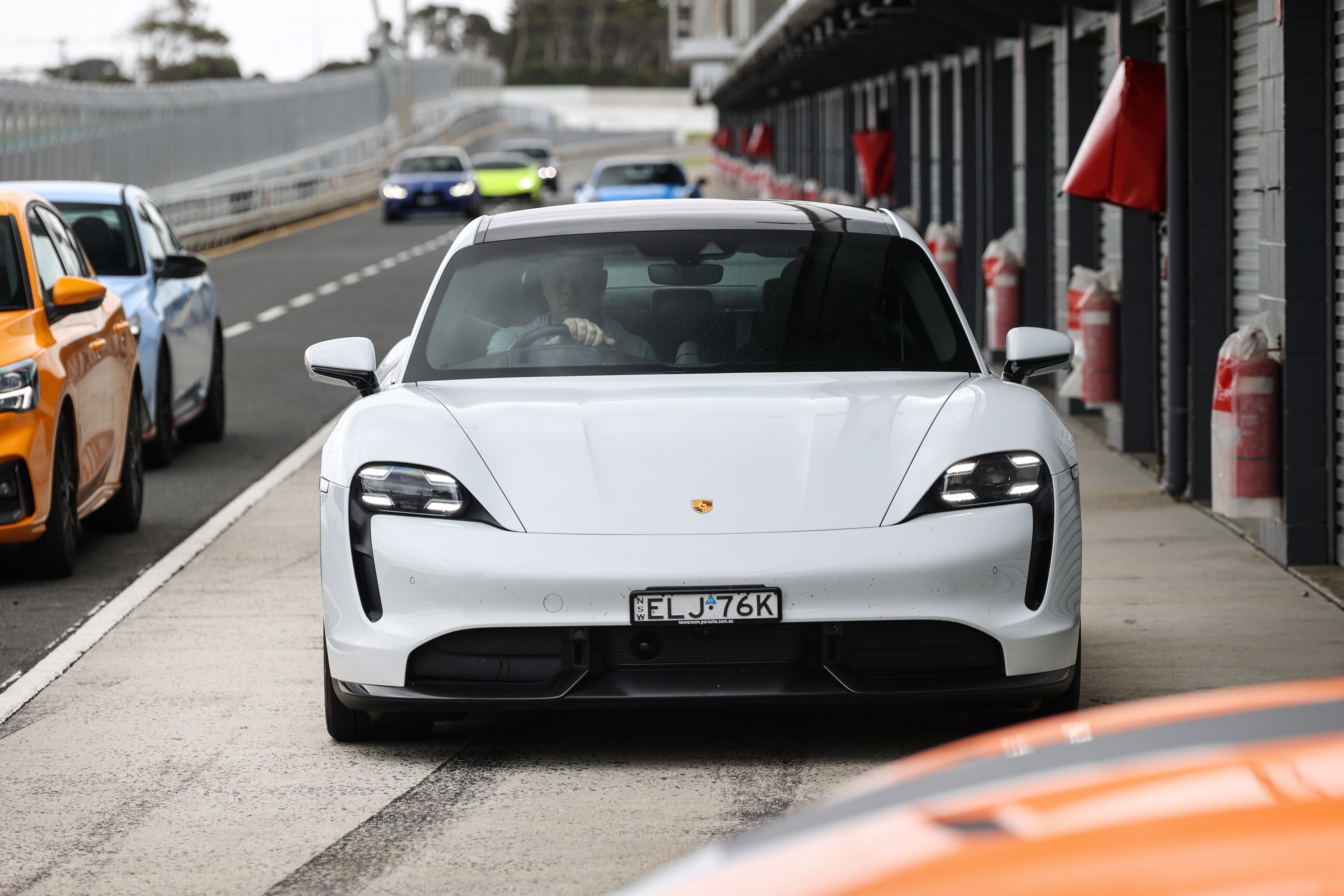
Foot mashed to the carpet, I glance down at the electronic speedo and it’s reading an even 250km/h. In that split second I question when this EV’s acceleration is supposed to tail off – because it doesn’t seem to be. Porsche’s two-speed gearbox is proving its worth. I’m immediately brought back to reality as the braking zone into Turn One at Phillip Island fast approaches. Now I have a different issue.
Arresting 2295kg from more than double the national speed limit isn’t an easy task. The gargantuan carbon-ceramic brakes bite, with the 10-piston calipers forcing the pads against the 420mm front discs (four-piston, 410mm rear). Pitch and roll is surprisingly well managed as the hefty four-door sedan perfectly reaches the apex. As Enright professes, “it’s a towering achievement by Porsche to make the Taycan handle as it does”.
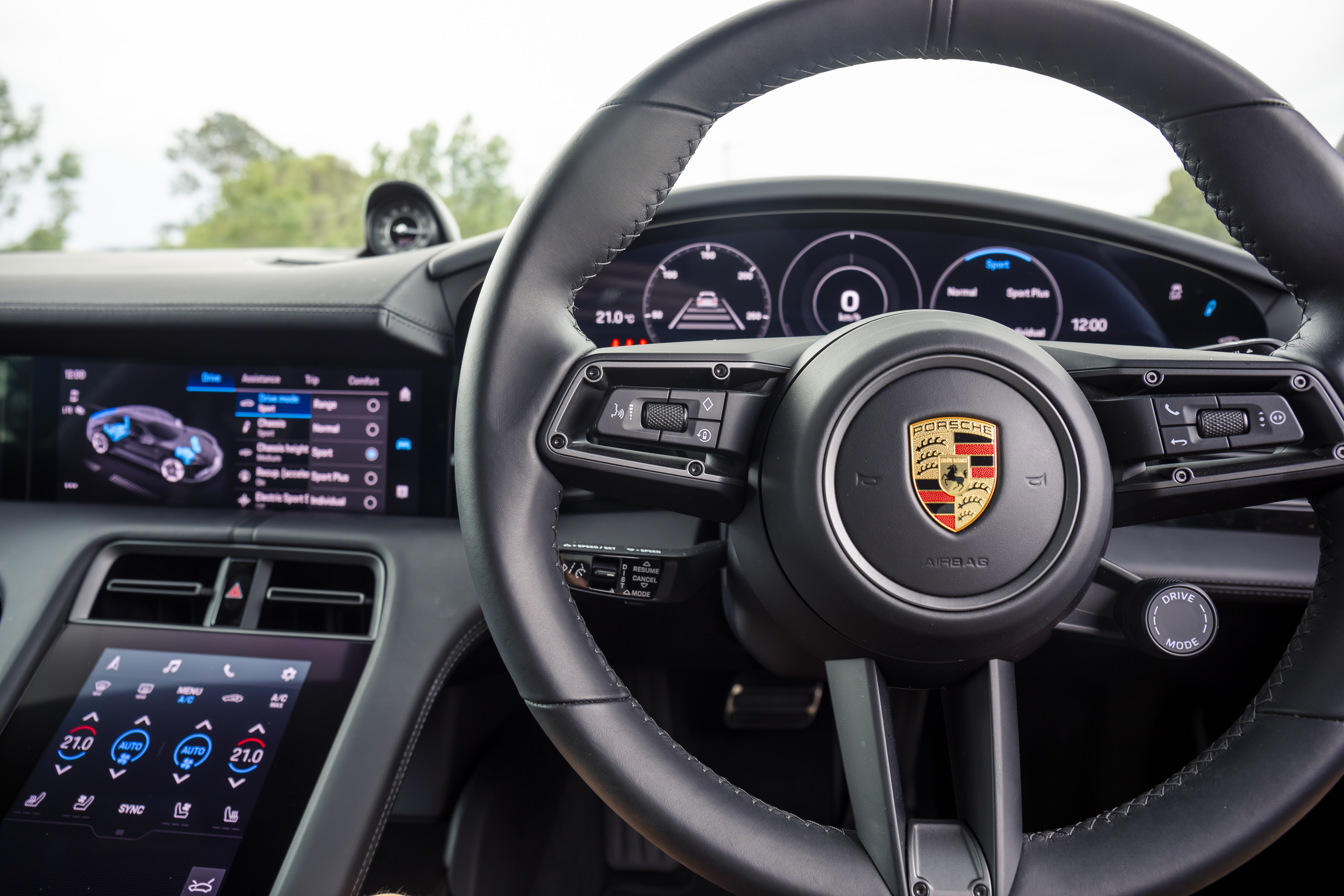
Of course, the Taycan Turbo S is the first fully electric vehicle to make a PCOTY field. However, it’s short-sighted to assume it’s here merely because of that fact. How well it performed in numbers is just the start. At 2.82 seconds it’s the fastest to 100km/h, its quarter-mile time of 10.73sec was bested only by the Lamborghini and it clocked a lap time just 0.67sec slower than the hyped ’Vette.
Relying solely on straight-line prowess has gained other performance EVs a certain notoriety. However, the Taycan Turbo S smashes that one-trick-pony status to pieces. It’s a Porsche. And it handles like one. As Bernie points out, the rear steering does take some time to comprehend, yet this is a car that rewards the more you push it.
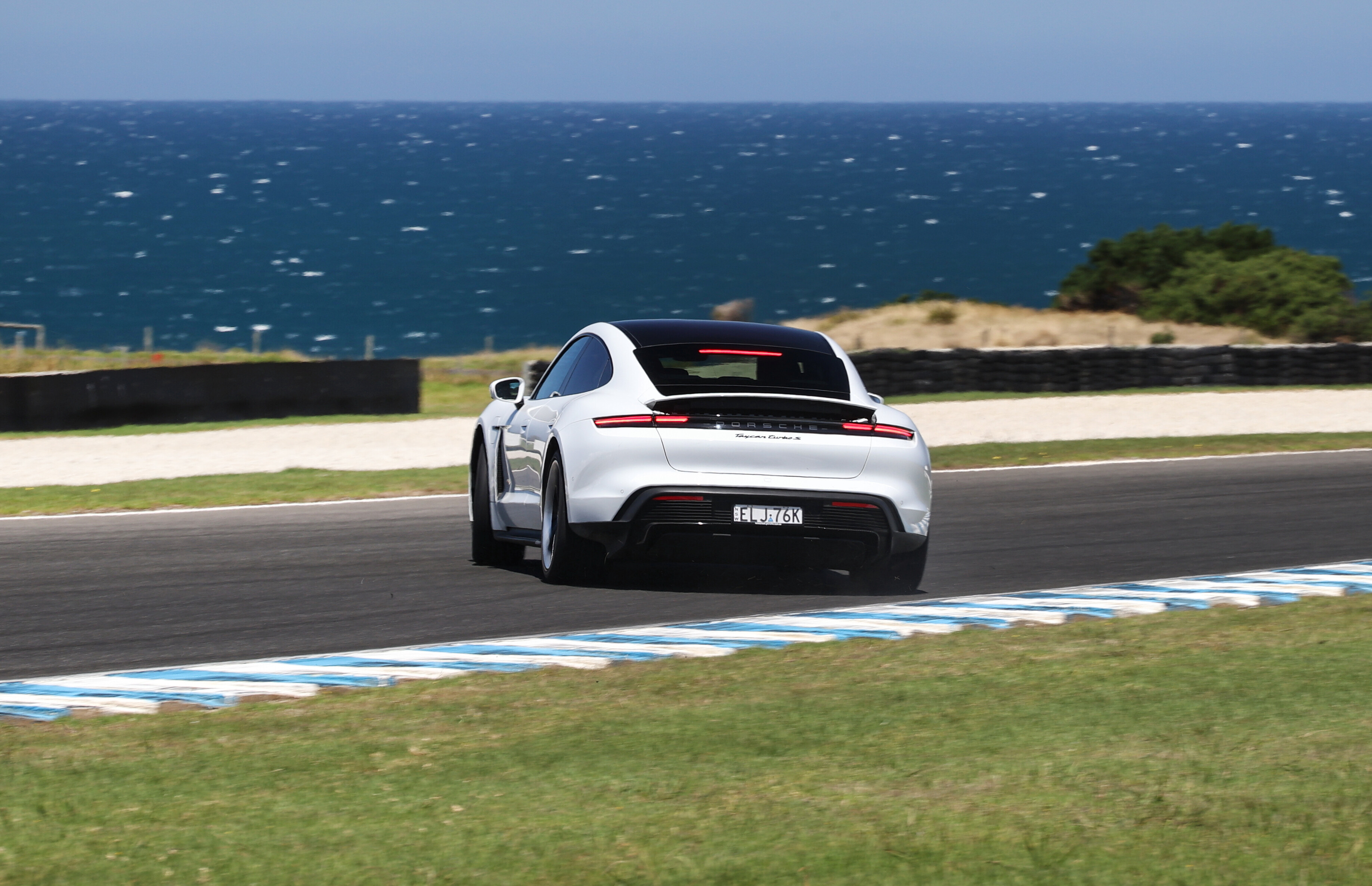
The chassis can be playful near the limits and once you learn how to work with the weight and the immediacy of the acceleration, it’s rewarding. The brake pedal feels natural despite huge re-gen and the steering has meat to its response. What’s more, you can dial it back and the Taycan becomes a convincingly luxurious cruiser.
However, that weight can’t always be concealed, with the dampers struggling to control heavy vertical compression and rebound – it becomes overwhelmed. Range also becomes an issue if you’re exploiting the Taycan’s goods in Sport Plus mode, especially with a dearth of fast-changing points in Australia. The Porsches’s PCOTY routine included regular round trips to a fast charger in Moe, some 65km from our Korumburra base.
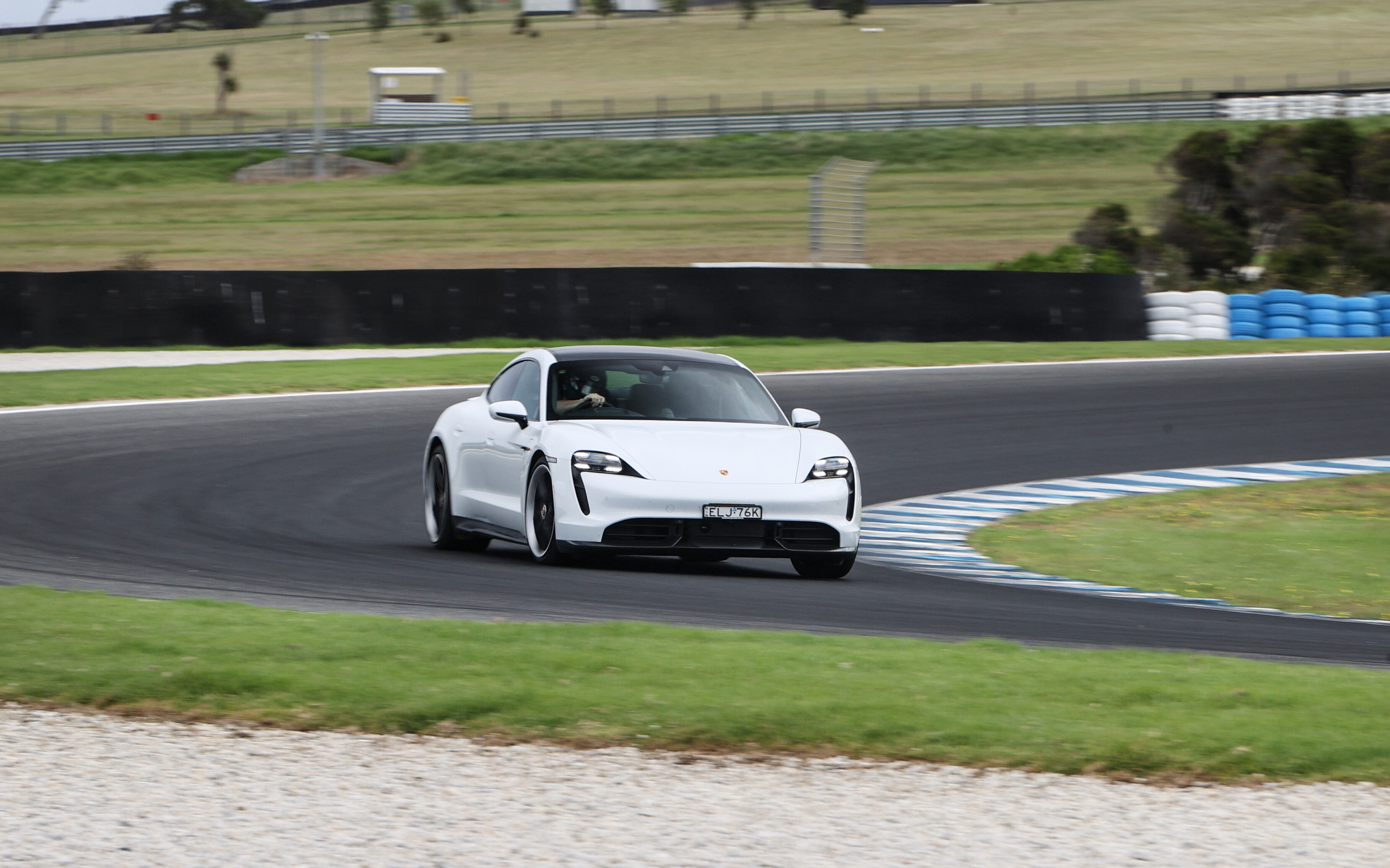
As a paradigm for the ideal performance EV the Taycan isn’t without fault. The price of entry is high, it’s a big unit, range limited our time on track and its ultimate utility – for the time being at least – remains hampered by patchy rapid-charging infrastructure.
Yet, the fact it parallels the past and future in such a palatable way gives reason for more than just hope, but for promise. Porsche hasn’t claimed the first PCOTY EV win this time, but a Cayman or Boxster just might. Now there’s a thought.
The judge’s comments
Alex Affat
“Beyond the initial shock and awe, the Taycan’s a fun thing to drive. Immense levels of mid-corner grip.”
Ranking: 7th
Andy Enright
“Lack of sound kills the stoke for me on track. I felt I was going very quickly but don’t think I actually was.”
Ranking: 7th
Trent Giunco
“I was a pessimist about performance EVs until I drove the Taycan. Feels entirely Porsche.”
Ranking: 6th
Cameron Kirby
“It’s a multifaceted thing. The straight-line performance undersells its total capability.”
Ranking: 7th
Bernie Quinn
“At 7/10s it feels remote and aloof. At 9/10s, the Taycan feels engaging and fast, becoming truly involving.”
Ranking: 5th
Luffy’s View
“Properly impressive on track. Beyond bizarre on the limit. Close to V8 Supercar speeds at the end of the straight. I’m a fan.”
The key figures
| 0-100km/h: | 2.82sec |
|---|---|
| 0-400m: | 10.73sec |
| LAP TIME: | 1:45.89 |
We recommend
-
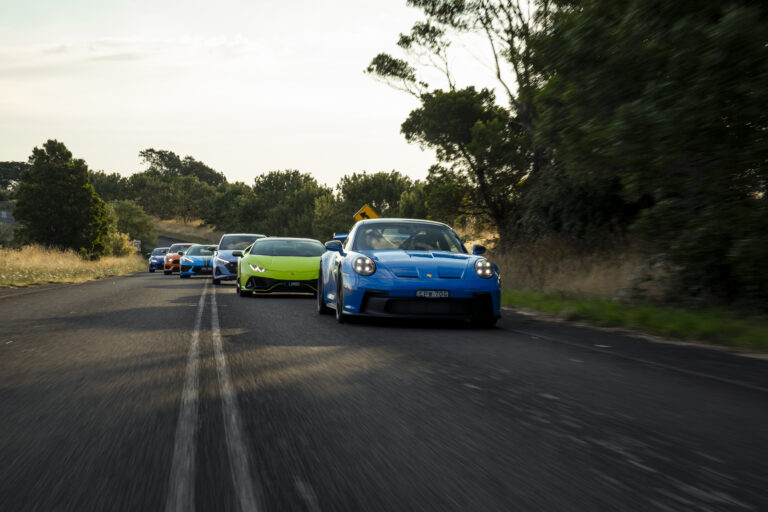 Performance COTY
Performance COTYWhy we had to have two awards for PCOTY 2022
Andy explains why we introduced Sports Car of the Year to the Performance Car of the Year award mix
-
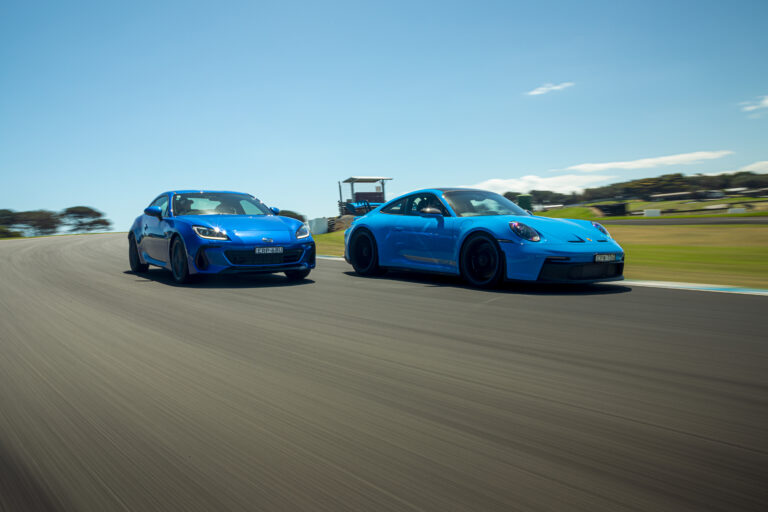 Performance COTY
Performance COTYWhat our PCOTY and SCOTY winners say about modern performance cars
In a changing landscape, the Subaru BRZ and Porsche 911 GT3 stand out as all-time great performance cars
-
 Performance COTY
Performance COTYVideo: MOTOR Performance Car of the Year 2022 winner revealed
And the winner of MOTOR’s Performance Car of the Year 2022 title is…


